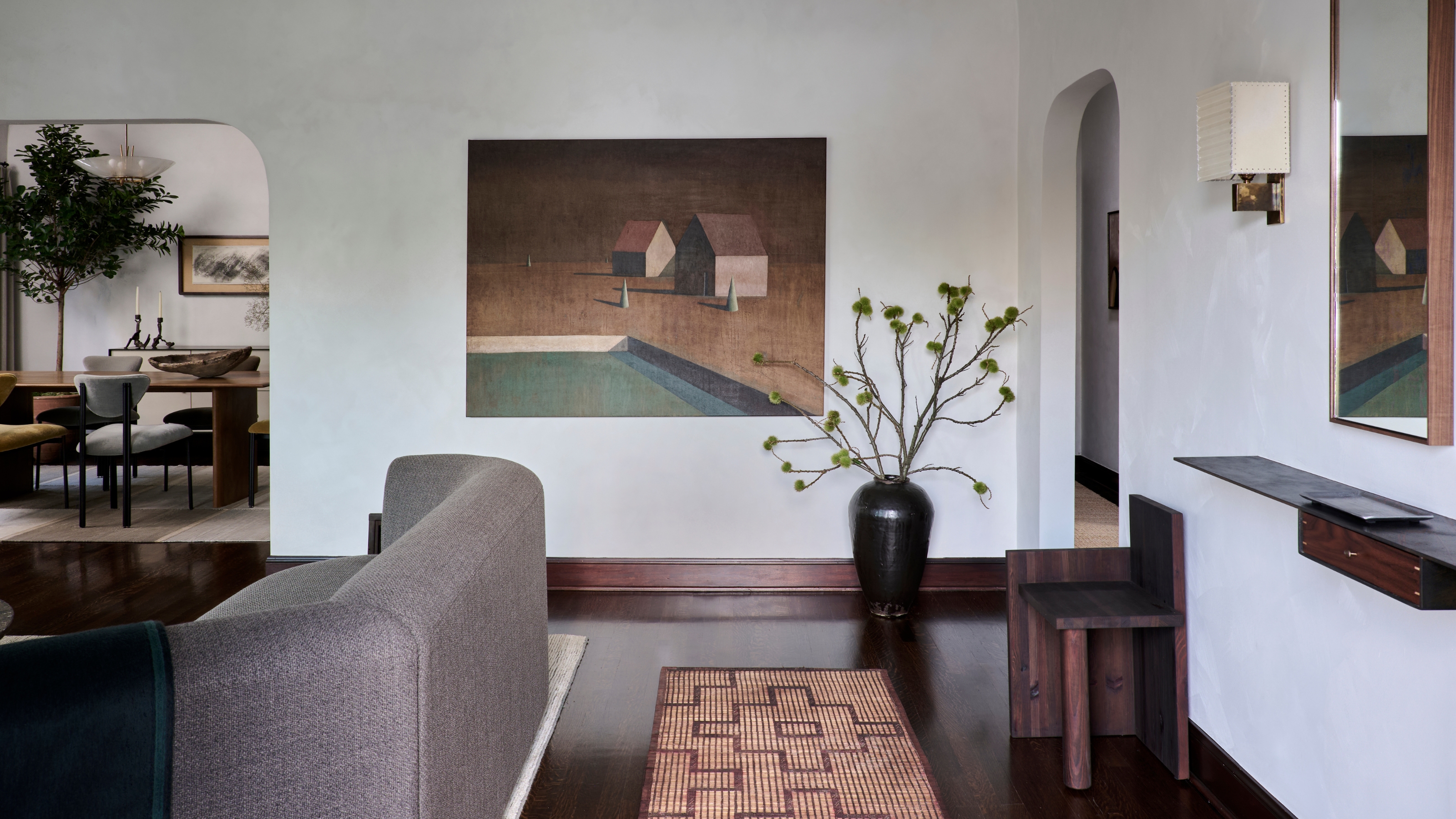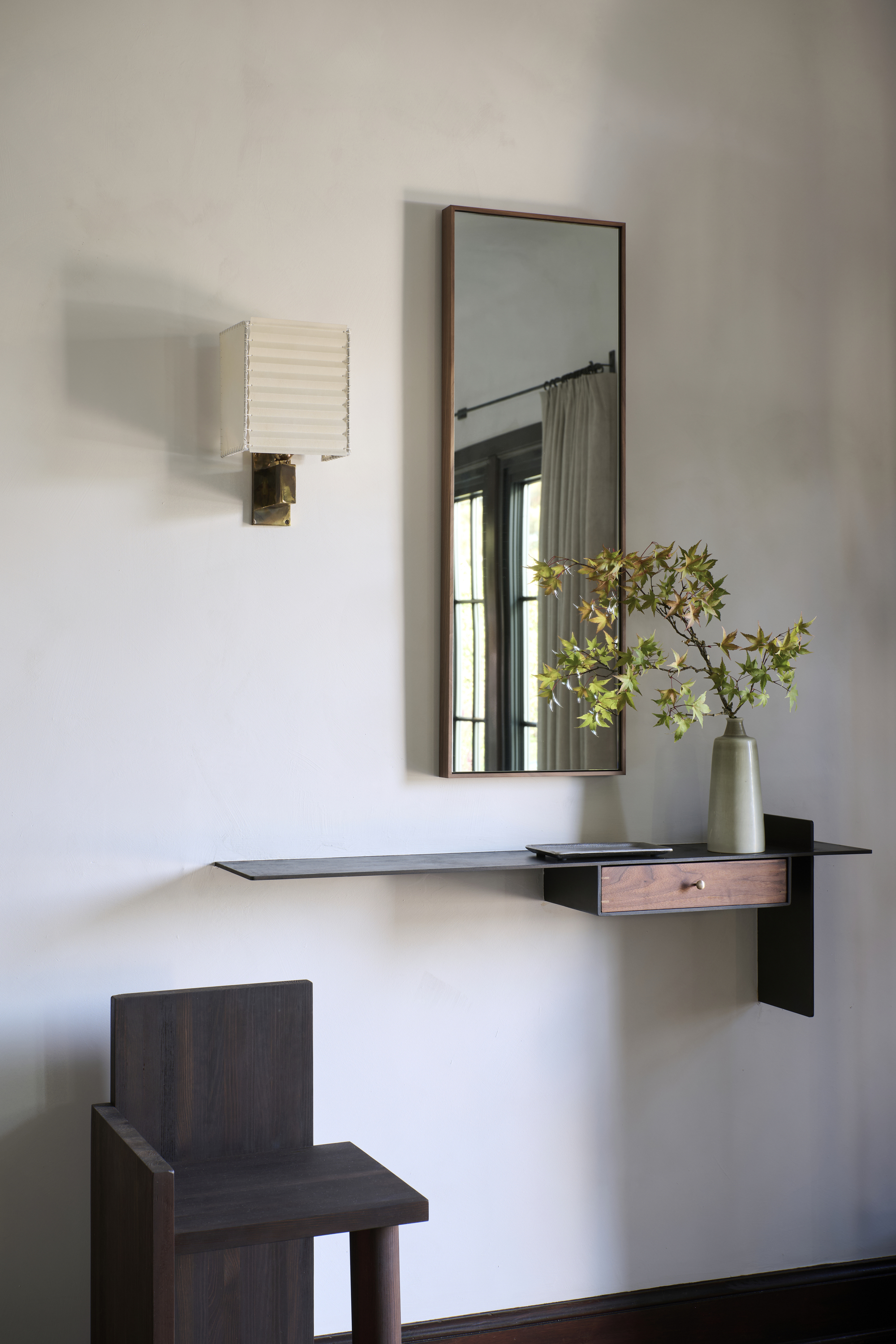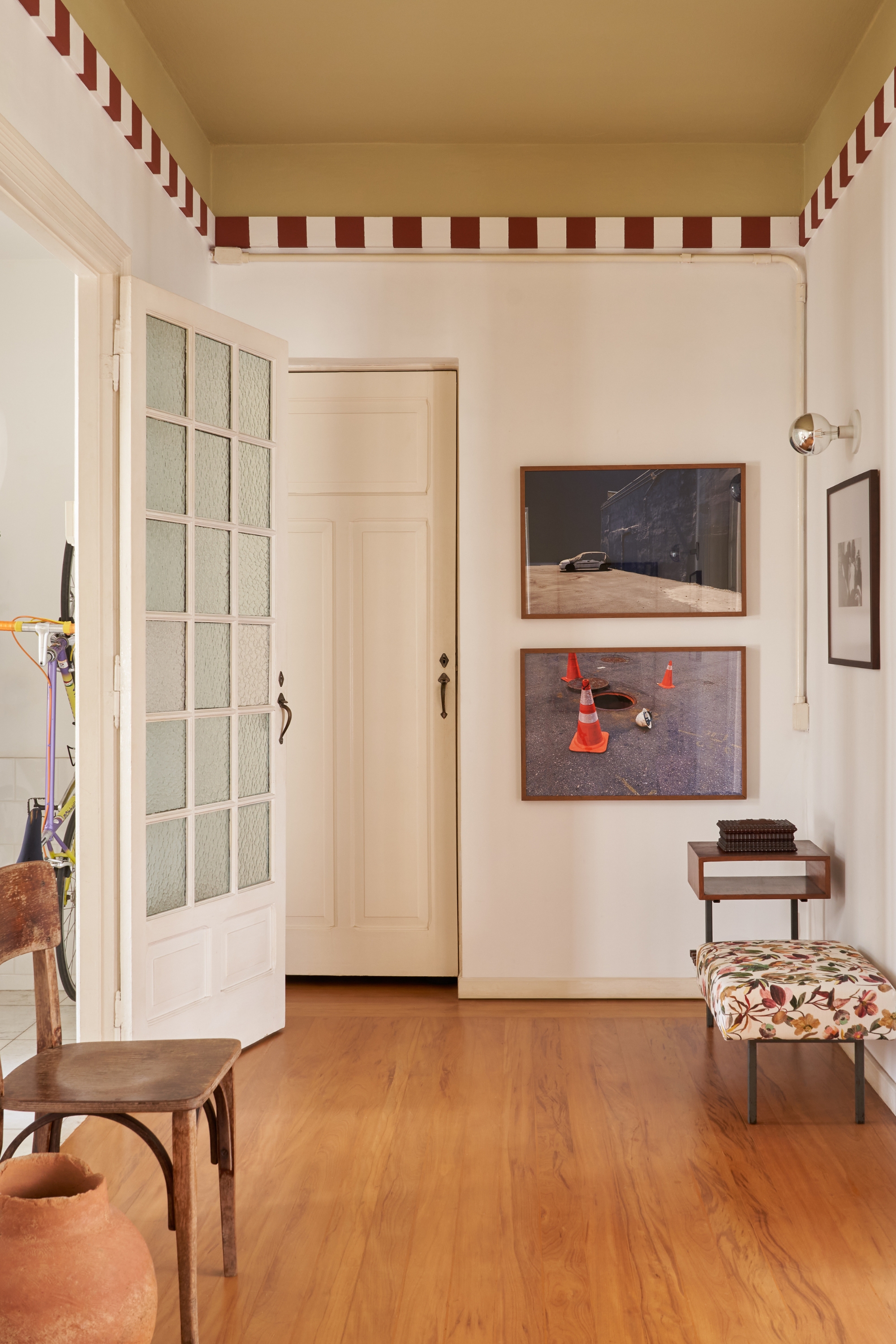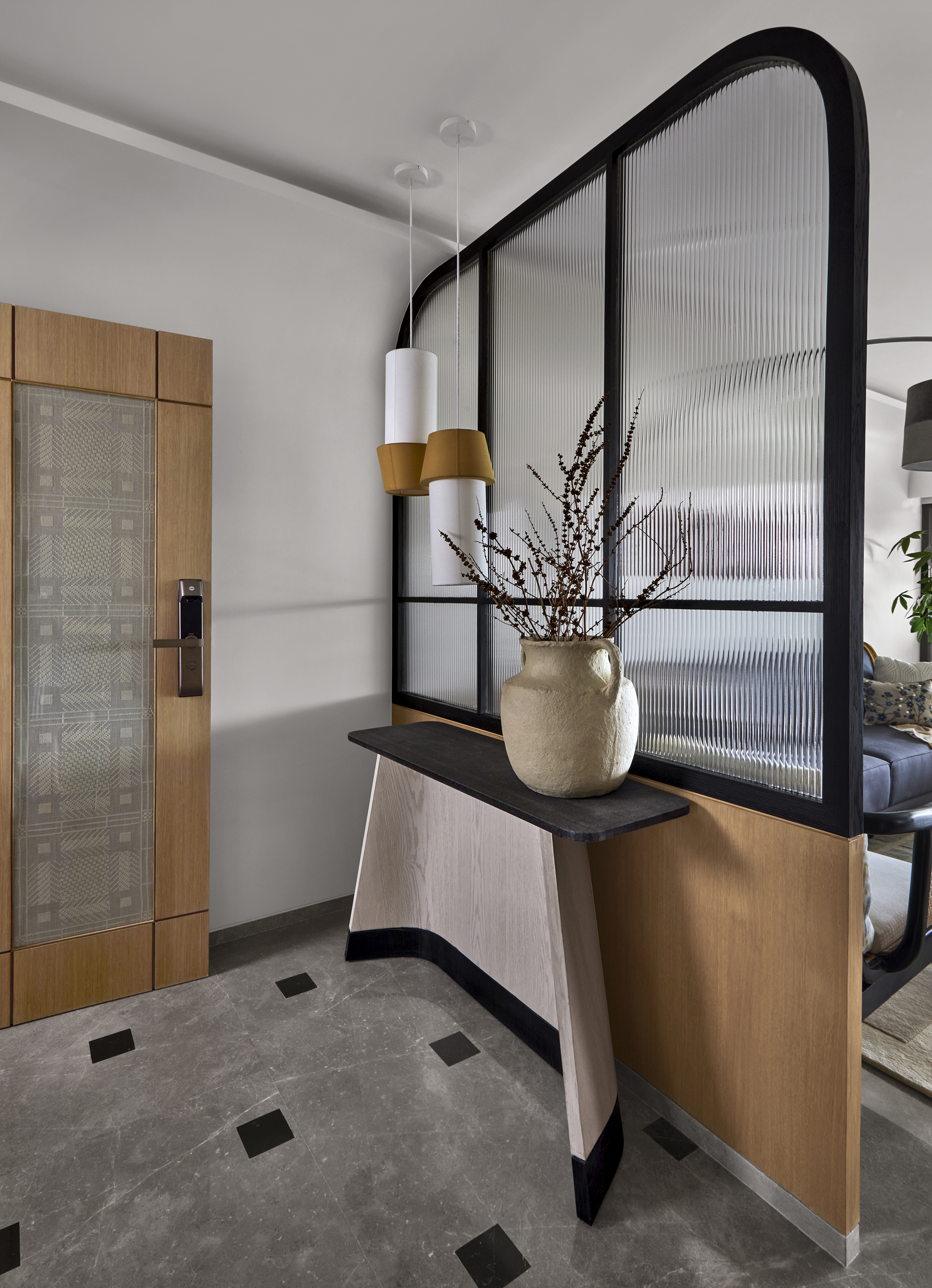
It's a common design challenge: a front door that swings open directly into an open-plan living room. Where's the sense of arrival? The moment to decompress. Well, the good news is that when it comes to working out how to create a foyer in an open living room, it's easier than you may think.
I've lived in an apartment for the last seven years of my life, and what that means is that the concept of a formal entrance foyer is all but foreign to me. Over the years, though, I've found my ways to mimic the feeling, even in the most awkward and tight of spaces.
When it comes to decorating a living room with no entryway, and finding ways to create that coveted sense of arrival in the space, interior designer Monica Fidelix tells me that first, you have to decide what you want from it. "I believe an entryway is an opportunity to create a great first impression," she says. "It’s where you can set the mood of the house and showcase the personality of its owners."
So how do you create a foyer in an open living room? It usually starts by creating a vignette — perhaps a practical table or shelf, a mirror that merges form and function, and then adding a small stool that doubles as not only a place to put your shoes on, but decor as well. The formula for creating a foyer in an open living room may vary slightly from home to home, but the tricks are all the same.
Below, I've found a few designer-approved secrets to inspire your entryway ideas.
1. Create an Entryway 'Vignette'

In order to create any kind of foyer in an open living room, you first need to understand what it is that makes an entryway useful — as in, why bother in the first place. You want it to include functional items that will help you with your daily routine, likes hooks, a seating spot, and storage.
In fact, California-based interior designer, Lillian Goodman, tells me that, "Adding some obvious functionality to the entry space is a good way to define an entry when there isn't a formal one."
This could include a credenza or narrow console table that serves as a place to place keys or handbags, a small entryway bench, or a place to sit to take off shoes.
"A runner in an entry area can also create a sort of a visual 'hallway' that signifies an entry," adds Lillian. Though it may seem obvious, these simple styling tricks can create, or at least create the illusion, of an entry foyer.
In particularly small spaces, opting for a floating shelf over a console table will save even more valuable space. Just make sure it is sturdy enough to hold at least a catch-all for your keys.
Price: £59.99
I love a floating shelf — they are the perfect way to add just a touch more storage space without taking up more room than necessary. This metal version from H&M will double as art for your walls.
Price: £179
A runner is such a simple way to help zone your space and mimic the look and effect of an entry hallway.
Price: £110, Was: £275
A mirror is an absolutely essential part of creating a foyer in a space that lacks one. We all need a glance at our reflection before we run out the door to fix our hair or make sure our jacket is on straight.
2. Zone the Space with Color

Beyond just the essentials, Monica Fidelix says she, "strongly recommend adding elements of surprise, such as a unique painting creating, an interesting pattern, or even a cool wallpaper trend. If possible, give special treatment to the ceiling; differentiate it somehow."
It doesn't have to be a lot (especially as space is at a premium), but including art and statement pieces tells a story about who lives there and reflects their personality. "An eye-popping colored element is always welcome," says Monica. "Make it unique!"
3. Install a Partition

Another option when it comes to working out how to create a foyer in an open living room is to install design elements that visually divide the space, without entirely blocking the view. This could be a glass partition wall, room dividers, a see-through panel, or even open-shelving. "These elements also create a sense of exciting mystery: they incite curiosity and the desire to explore further inside," says Monica.
"This concept can either be seamlessly integrated with the rest of the walls or a standalone screen," adds Mumbai-based architectural designer and founder of the Comma Collective, Kushaal Jhaveri.
A frosted, tinted, or fluted glass partition serves to divide the space and add privacy, while still allowing light to flow through. In contrast, a free-standing room divider offers a more defined sense of seclusion. "It can also be a designer feature, that acts as a sculptural element that unifies the space," adds Kushaal.
"To further highlight the distinction between the living room and the foyer, consider incorporating inlays in the flooring or introducing a unique ceiling design to accentuate the separation," Kushaal says.
Price: £649.99
This hallway bench from La Redoute provides the ideal amount of privacy in a small, but open-concept space. It will help divide the room without making it feel too blocked off. Plus, there are several hooks built-it to hang coats and keys.
Price: £264.99
A bookshelf partition is a great way to maximize space in an entry-less room. The built-in shelving allows places for decor, and visually divides the room without creating a confining feel.
Price: £1,000, Was: £2,500
In my opinion, if you are going to opt for a screen room divider, then the more stylish and chic the better. This one from Jonathan Adler is functional and also becomes an art piece in itself.
But why would you even want to create a foyer in an open living room? Won't it just take up valuable space? "A foyer provides a warm welcome, setting the tone for the rest of the home," explains Kushaal. "A decorative ceiling light, a sculptural art piece, and a strategic console table can work together to create an inviting and stylish atmosphere as soon as one enters."
These carefully selected elements help establish a sense of personality and style, giving ambiance to the first and last area you see in your home throughout the day, no matter the size of the space.







